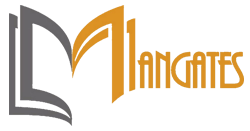This risk assessment training set out to look at how to identify hazards within the workplace, recognise the risk and implement a control measure.
Managers, leaders, trainers, health and safety officers and anyone involved in health and safety training and/or procedures can take this training.This risk assessment training course will give you the necessary information and skills to enable them to carry out a thorough and effective accident investigation.
The law does not expect you to eliminate all risk, but you are required to protect people as far as ‘reasonably practicable’. We look at how to identify hazards within the workplace, recognise the risk and implement a control measure.
The Health and Safety at Work Act (1974) imposes a general duty on employers, self-employed, employees, suppliers and owners of premises to ensure that their workplaces are safe and offer no risk to health.
Duration Learning Credits
1 Day – 8 hours of 8 PDU’s
Session
Public Classroom Pricing:
Early Bird Price: AUD 649.00
Regular Price: AUD 799.00
Instructor-Led Virtual Live Pricing:
Early Bird Price: AUD 549.00
Regular Price: AUD 699.00
Private Group/ In-House Learning:
Have a group of 3 or more people?
Register yourself with a special pricing and
request the training exclusively
● Health & Safety Law – The law does not expect you to eliminate all risk, but you are required to protect people as far as ‘reasonably practicable’
● Hazards, Risks & Control Measures – A Hazard is something in the workplace that has the potential to cause harm, damage or injury. Risk is the likelihood or severity of this happening. The hierarchy of making a workplace safe is to: Eradicate, Reduce, Isolate, Control or Personal Protective Equipment (PPE)
● Safety Signs & Safe Systems of Work (SSOW) – One area of importance with regards safety is the use of safety signs. There are several types of safety signs that you will encounter. A Safe System of Work (SSOW) is the safe method of working, designed using the results of a risk assessment.
● Accidents – You have 2 top priorities when you are first notified of an accident, to the injured person and to make the area safe. Accidents are a good way of identifying if your risk assessments and control measures are working
● How to Assess the Risks in Your Workplace – The 4 corners of our Risk Assessment: Corner 1 Identify the Hazards & Who is at Risk, Corner 2 Evaluate the Risks and Decide on Precautions, Corner 3 Record your Findings and Implement them and Corner 4 Review your assessment (update if necessary)
● Review of Session – Creating an action plan to embed learning.
Anybody who is interested in learning Risk Assessment Skills.
At the end of this risk assessment training will be able to:
● Identify the key responsibilities under the Health & Safety at Work Act (HASAWA)
● Explain the difference between Hazards, Risks, and Control Measures
● Identify what safety signs and Safe Systems of Work are within your workplace
● Identify the part accidents play within the risk assessment process
● Recognise the 4 corners of the Risk Assessment Process
● Demonstrate your understanding of risk assessments through practical exercises
● Please note: The legal explanations in this course are based on United Kingdom examples. However, the materials can easily be adapted to include other countries’ data.
